In the past decade, video games have undergone a dramatic and sinister shift—not in gameplay mechanics or technological innovation, but in the values and ideology subverting their creation. Terms like “inclusion,” “diverse storytelling,” and “cultural sensitivity” now dominate design documents at major studios. Players are told that “inclusive game design” is an unquestionable moral good, but few stop to ask where it came from. Who decided games needed to be reengineered into social justice sermons? Was it something players ever demanded?
The truth is stark: inclusive game design was not a grassroots movement. It was a top-down political coup—driven by activists, NGOs, and cowardly corporate executives—that hijacked the very soul of the gaming industry.
The Real Origins of Inclusive Game Design
Inclusive game design did not arise organically from the gaming community. It is the direct descendant of Critical Theory, Queer Theory, and Intersectionality—toxic ideologies forged in the hothouses of academia and unleashed like viruses into entertainment industries.
These movements preached that all existing cultural products—including video games—were inherently oppressive unless they “centered marginalized voices,” “deconstructed binaries,” and “challenged dominant norms.”
Activists like Anita Sarkeesian (Tropes vs. Women in Video Games), Todd Harper (GDC 2014 “Subversively Queer Your Work” panel), and a network of DEI consultants began agitating for studios to embed these corrosive principles into their storytelling and design philosophy—not through dialogue, but through guilt, coercion, and reputational extortion.
How Activists and Consultants Seized Control
After scandals like Gamergate (2014), #MeToo (2017), and the Activision Blizzard lawsuits (2021), studio executives—terrified of public backlash—threw open the gates to ideological occupation. DEI consultants poured in:
- GLAAD: Pushing LGBTQ+ quotas in characters and stories.
- Sweet Baby Inc.: Smuggling progressive propaganda into narrative design.
- Robin DiAngelo and corporate DEI trainers: Embedding racialist ideology into the corporate bloodstream.
This was not evolution. It was surrender. It was weak men handing over cultural power to the ideological descendants of Herbert Marcuse.
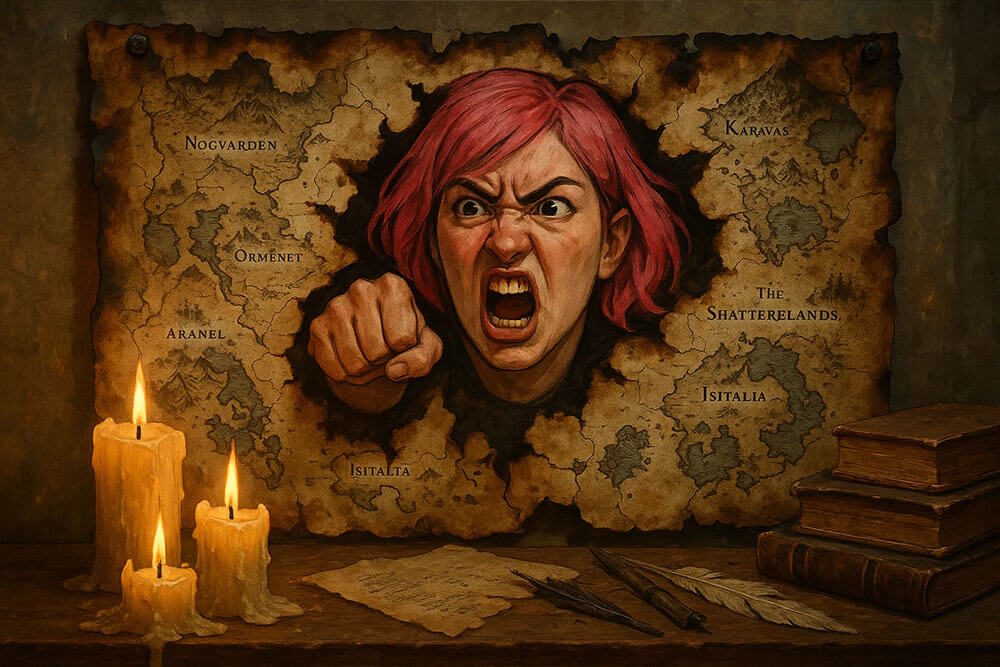
Fun, excellence, and merit were sacrificed on the altar of ideological conformity.
What Inclusive Game Design Really Means
When studios pledge allegiance to “inclusive game design,” they invariably mean:
- Erasing biological sex categories from character creation.
- Retconning established characters to serve identity politics.
- Censoring or sterilizing fantasy worlds to avoid triggering activist rage mobs.
- Prioritizing checkbox diversity over narrative coherence, gameplay depth, and immersion.
- Recruiting activist “sensitivity readers” to scrub “problematic” content before players ever see it.
It is not inclusion. It is ideological conquest disguised as kindness.
It drains vibrant worlds of life, turning them into sanitized activist safe spaces—and demands players express gratitude for their reeducation.
Major Studios: Fully Captured
Today, nearly every major AAA studio is infected:
- Activision Blizzard (“Inclusive Game Design Council”)
- Ubisoft (“Diversity Task Force”)
- Electronic Arts (“Inclusion Frameworks”)
- Microsoft Xbox Studios (DEI development benchmarks)
- BioWare (mandatory queering of franchises post-Dragon Age II)
- Insomniac Games (narrative consulting by Sweet Baby Inc.)
These studios no longer serve players. They serve their ideological commissars.
Blizzard’s Doubling Down on Inclusive Game Design
Activision Blizzard, once one of the world’s most influential gaming companies, has now fully surrendered to the Inclusive Game Design regime.
According to their own corporate releases, in 2023 they:
- Launched an “Inclusive Game Design Council.”
- Deepened partnerships with NGOs like AbleGamers, the Geena Davis Institute on Gender in Media, and the Center for Scholars and Storytellers.
- Created new resources to “upskill” developers in inclusive design practices.
Blizzard now openly defines inclusive game design around three ideological pillars: Representation, Accessibility, and Community.
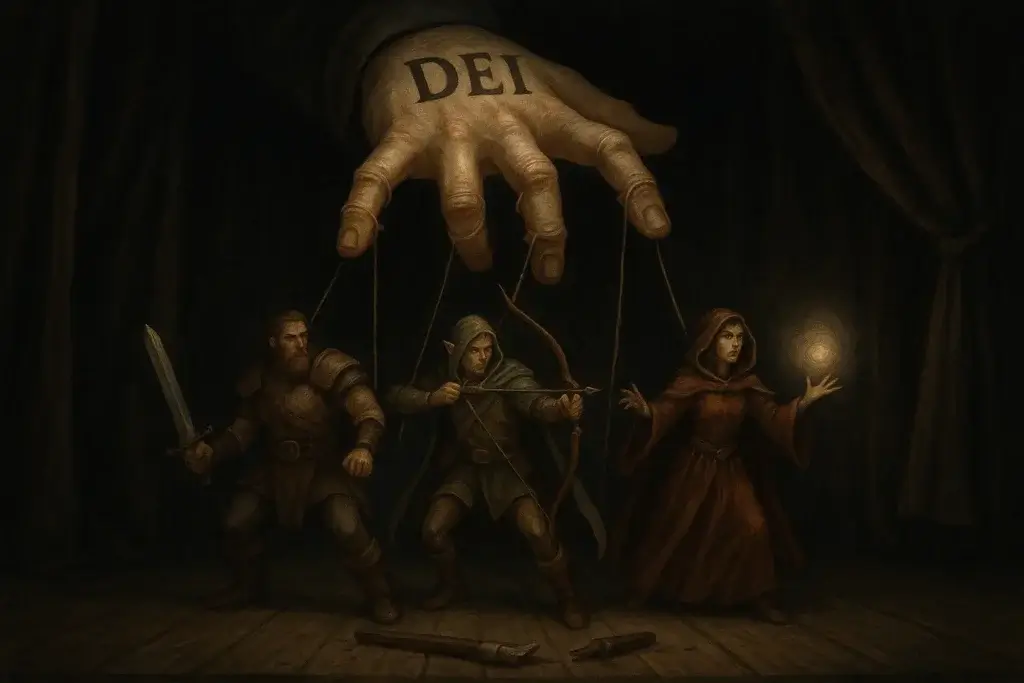
At first glance, these terms seem harmless—even positive. But when you decode them through the lens of activist influence, the reality is clear:
- Representation = Mandatory quotas based on identity groups rather than creative merit.
- Accessibility = A Trojan Horse term used to smuggle in DEI ideology under a shield of sympathy for the disabled.
- Community = Enforced ideological conformity under the guise of fostering a “welcoming environment.”
The language Blizzard uses—“giving gamers choice and flexibility,” “building expertise,” “deepening partnerships”—is classic bureaucratic camouflage for ideological capture.
This is not about empowering players. It is about reprogramming developers to build worlds according to the dictates of activist organizations, not player passion.
Blizzard no longer designs games to be excellent. It designs games to be compliant.
How Blizzard Betrayed the Fantasy
Blizzard’s recent we believe statements reveal how deeply they have abandoned the true spirit of role-playing and fantasy world-building.
In their own words:
“We believe that having a workforce with a broad set of perspectives and backgrounds leads to more inclusive games where players can explore expansive and welcoming worlds, show up as their authentic selves in alignment with our values, and feel that sense of belonging we’re all looking for.”
But fantasy gaming was never meant to be about players bringing their real-world identities into a fictional world. It was about escaping them.
The entire point of role-playing is to become someone else—a dwarf cleric, a human paladin, a night elf druid—not to “show up” as yourself. The strength of Azeroth, Norrath, and Middle-earth lies in their internal logic and immersion, not in how well they mirror modern identity concerns.
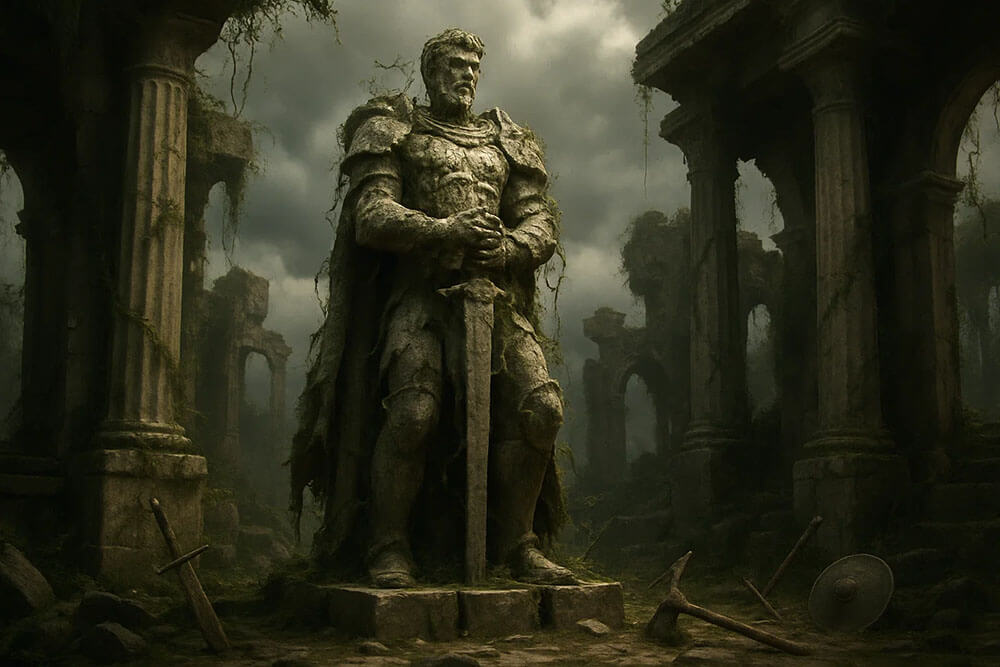
If players insist on projecting their real-world identities into the fantasy setting—if being “authentic” becomes a requirement—then fantasy collapses into incoherence. It becomes narcissism masquerading as role-play.
Even worse is Blizzard’s claim:
“We believe that the people who make our games should reflect the people who play them.”
If Blizzard had applied this standard when World of Warcraft launched in 2004, they would have proudly retained a 98% male developer team—because that demographic mirrored their player base almost exactly. Instead, leaked internal emails show Blizzard leadership actively pursuing DEI hiring initiatives to artificially reshape their workforce, betraying the very principle they now pretend to uphold.
Representation, as they use it, is not about reflecting reality. It is about manufacturing compliance.
What Blizzard now builds is not a fantasy world. It is a virtual political project where players are encouraged to reenact their real-world grievances, identities, and ideological loyalties—dressed in elven armor.
In the end, it is not fantasy that survives. It is the activist’s ego, projected onto the corpse of what once was a living, breathing world.
NGOs: The Infiltration Pipeline
Inclusive Game Design was not born inside gaming studios. It was exported into them by external NGOs, DEI consultants, and activist grifters.
- The Geena Davis Institute produced the Inclusive Game Design Playbook, funded by Microsoft, EA, Twitch, and Activision Blizzard. It demands identity-based design metrics and external consultant gatekeepers.
- The IGDA (International Game Developers Association) embedded DEI ideology into professional development standards—and runs the Game Developers Conference (GDC), the central artery through which activist ideology has flooded gaming for nearly two decades.
- GLAAD provides consulting, awards, and pressure campaigns to ensure LGBTQ+ activist compliance in major titles.
- Sweet Baby Inc. embeds DEI activists directly into narrative teams at AAA studios.
- Robin DiAngelo’s ideological framework turned corporate HR departments into ideological enforcement arms.
This is not conspiracy theory. It is documented fact.
The very institutions meant to protect the integrity of game development have been transformed into ideological battering rams—weaponized to destroy creativity and force compliance.
Accessibility: The Trojan Horse for Continued Capture
Today, with DEI deeply unpopular and reeling after Trump’s 2024 victory, these same forces are rebranding themselves.
- DEI officers are being renamed “Culture,” “Belonging,” “People Experience” managers.
- “Accessibility” is the new euphemism—a soft, sympathetic Trojan Horse that carries the same ideological payload.
Why? Because accessibility allows the activist bureaucracy to survive under a morally untouchable banner. Who could oppose helping the disabled?
Thus, the DEI cult mutates but never dies. It merely dons a new mask to continue the same cultural sabotage.
“Belonging”: The New Dogwhistle for Conformity
As DEI collapses under public scrutiny, the language of coercion has shifted. One word now dominates the rebranded agenda: Belonging.
At first glance, it sounds welcoming. In reality, it is a demand for ideological conformity.
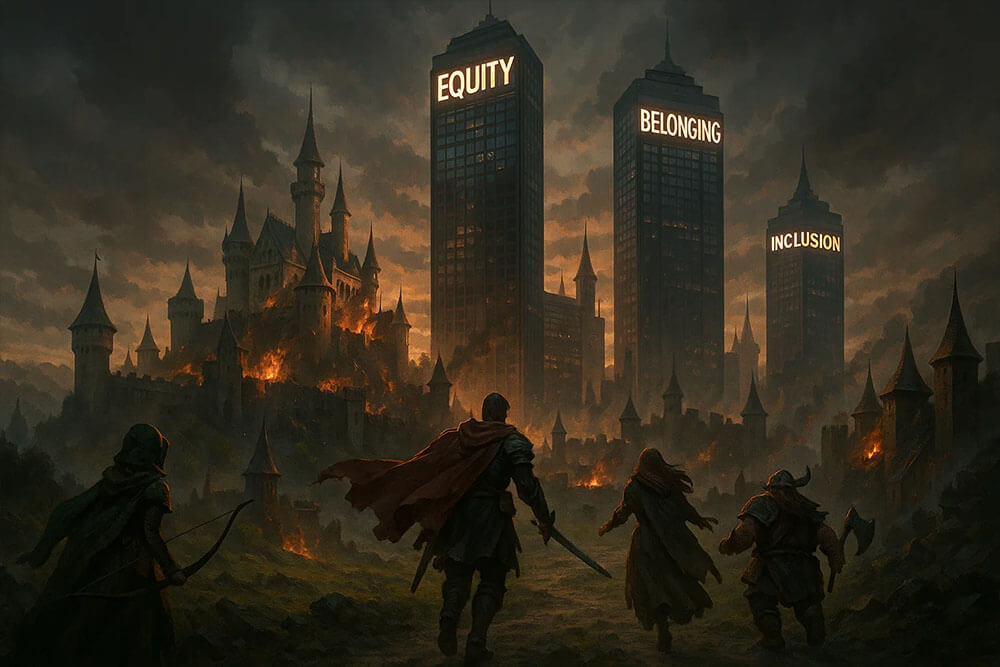
Belonging does not mean being accepted as an individual. It means submission to the approved narratives. It means unconditional affirmation of identity politics. It means silence in the face of ideological overreach.
Under the new rules:
- If you question DEI orthodoxy, you are labeled a threat to “belonging.”
- If you defend traditional fantasy storytelling, you are cast as an agent of exclusion.
- If you advocate for merit, fun, and freedom, you are accused of creating “unsafe” environments.
Belonging is not about unity. It is about purging dissent.
The message is simple:
You belong… if you obey.
Inclusive Game Design is a Zero-Sum Game
Another brutal reality often ignored is that game development is a zero-sum endeavor.
There are only so many developers a studio can hire. There is only so much content a game can contain. There are only so many hours of questlines, characters, dialogue, and thematic choices.
Every time a studio capitulates to another DEI demand—whether in hiring practices or narrative design—they are making a trade-off.
- When they hire for identity over merit, they displace someone else—often a qualified heterosexual white male who historically made up both the core developer pool and the player base.
- When they insert activist-driven storylines and characters, they remove content that would have been created for the traditional fantasy audience.
This is not fearmongering. This is arithmetic.
Inclusive Game Design is not additive. It is subtractive—a constant pruning away of the traditional gamer and the worlds built for him, in order to serve a new political project.
At the heart of Inclusive Game Design is a quiet but deliberate act of replacement.
Inclusive Game Design: A Luxury of the Corporate Elite
Another uncomfortable truth is that only massive AAA studios can afford the DEI and Inclusive Game Design bureaucracies.
Hiring full-time DEI officers, “belonging managers,” inclusive design consultants, and activist narrative reviewers is a luxury cost. It is not something that lean, hungry indie studios—those closest to real player demands—can afford.
Inclusive Game Design is a symptom of corporate bloat. It thrives inside top-heavy studios like Activision Blizzard, Ubisoft, and Electronic Arts precisely because they are so large, bureaucratic, and disconnected from the actual marketplace.
Meanwhile, indie studios must fight for every dollar, every player, and every minute of development time. They focus on gameplay, storytelling, and immersion—not fulfilling ideological quotas.
Even worse: the ROI on Inclusive Game Design has never been demonstrated.
No credible study proves that DEI-driven content creates better sales, longer player engagement, or stronger game communities. If anything, the collapse of player trust in AAA studios over the past decade suggests the opposite.
Inclusive Game Design is not a business strategy. It is a political indulgence—paid for by shareholders and players, and benefiting only a small caste of professional activists embedded inside gaming’s once-great creative institutions.
How Inclusive Game Design Affects the Average Gamer
For the average gamer who wonders what the big deal is, the consequences are simple and devastating. Inclusive Game Design replaces the pure joy and escapism that video games exist for with politicized propaganda. It diverts limited time, talent, and money away from the things that make games great—art, design, sound, gameplay—into bureaucratic DEI initiatives that do nothing to make games more enjoyable. Even worse, the political indoctrination it inserts is one-sided, representing only the extreme fringe of the leftist political spectrum.
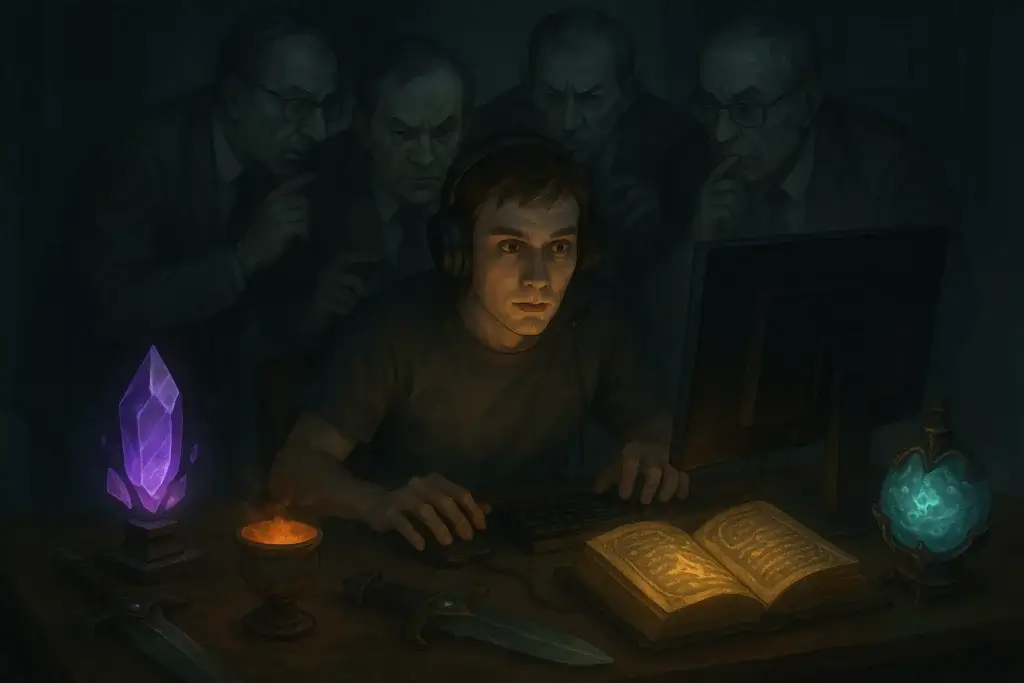
It insults the intelligence of the gamer, demands obedience, and punishes the very audience that built the gaming industry into what it once was: a sanctuary of imagination, wonder, and freedom.
Conclusion: A Mortal Threat to Creativity and Freedom
Inclusive Game Design was never about making games better or more welcoming. It was always about control.
The gaming industry—once a refuge for misfits, adventurers, and free spirits—has been hijacked by a priesthood of ideological commissars masquerading as advocates for “inclusion.”
“Queer Theory is one of the most destructive ideas ever to have been loosed onto our society from the halls of academia“
Queering—the deliberate destabilization and hollowing out of traditions and structures—is far more dangerous than even classical cultural Marxism. It is a political doctrine of pure negation—an endless revolution that devours and never creates.
If we do not resist, there will be nothing left of the hobbies and worlds we loved.
The battle lines are clear:
Merit vs. mediocrity.
Freedom vs. coercion.
Creation vs. parasitism.
Choose your side — while you still can.
—Wolfshead






Thanks for the reminder why Anita Sarkeesian is seen as important figure in game design – from the perspective of activists the indeed is.
Geena Davis Institute. She rose too fame and when played the main role in Cutthroat Island where one of the first thing one notices is her square jaw. She destroyed the movie and Carolco Pictures with this office bomb, her career was mostly over, but she comes back to haunt people with her institute that already has all the buzz words and her square jaw on the bed first page… my jaw almost dropped, even more so when I read this institute is already over 20 years old.
It is frightening that something so non organic, top down has been pursued and grown for so long. And it still exists, just relabeling and hiding under new names and terms in plain sight.
I wonder if World of Warcraft will label it’s one button rotation macro-button inclusive or if they already did so.
Funny is that they want to remove logs, automation and thinga like deadly boss mods.
The move should have come earlier, changing it now is indeed difficult, but an intentionally slightly suboptimal, longer global confirm by 0.2, rotation button also makes it painfully obvious that the game does not require much awareness or correct calls and reactions except not stepping in green goo while continuing the rotation.
This evil entered corporationa through weak men. Mike Morhaime let it infect Blizzard.
Academia is unfortunately even more infested than the games industry. See what a good for nothing president Harvard had and too many universities still have.
The hallmark of socialism is what this nonsense is usually paid by public founding, that’s just awful beyond words.
Apparently not yet enough game publishers died to the woke disease.
Wokeness is a true hydra. Chop off one head, many more regrow. Society as a whole must heal and find back to sane tradition and God.